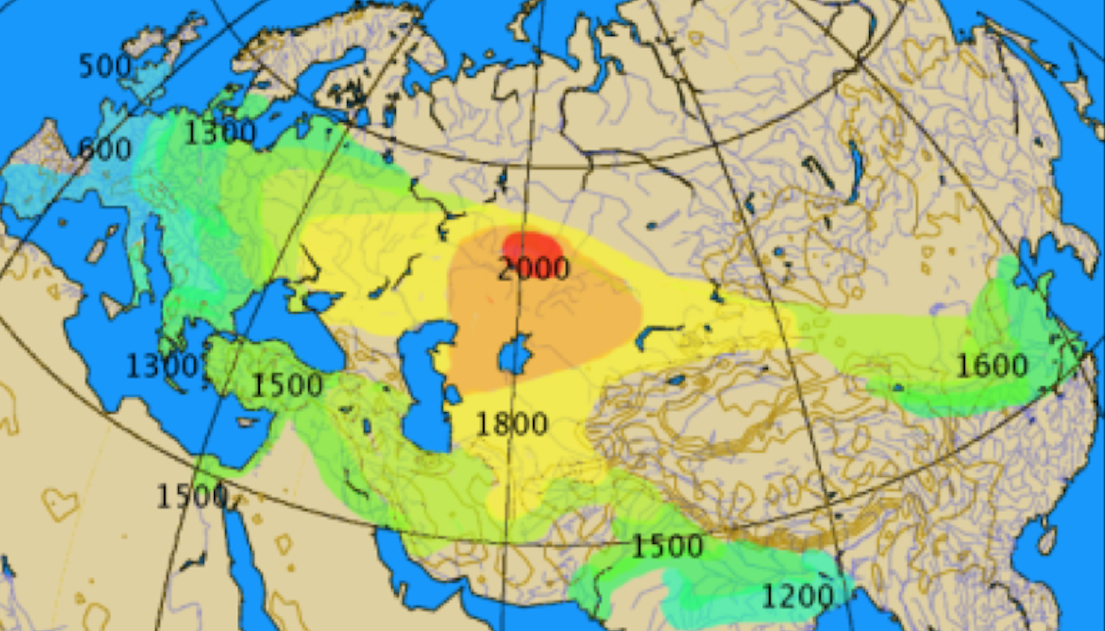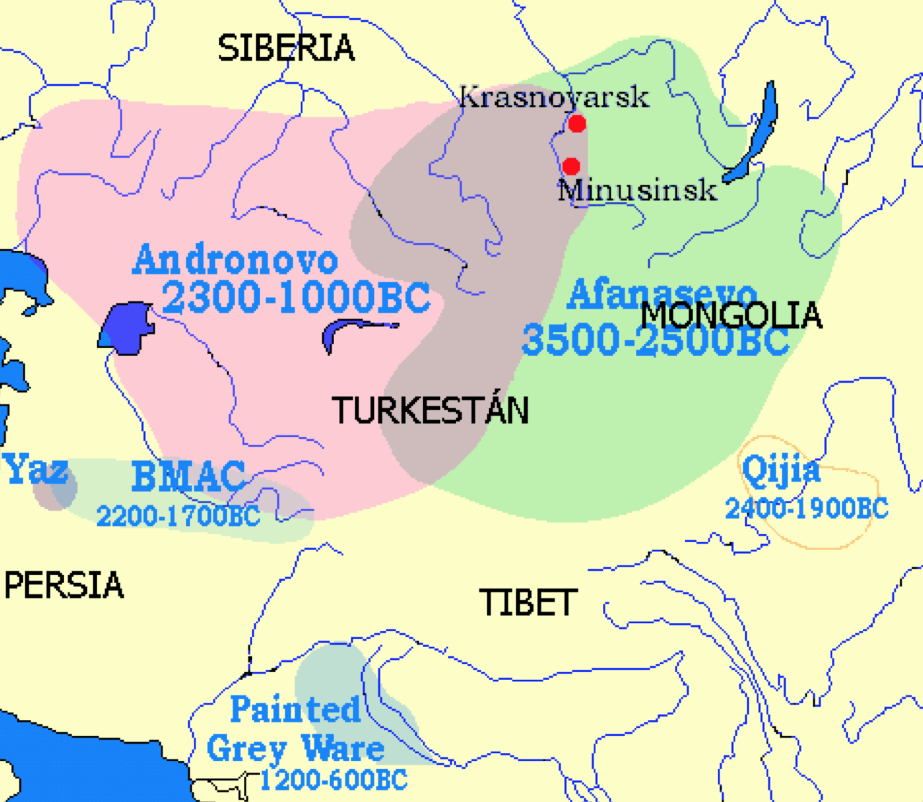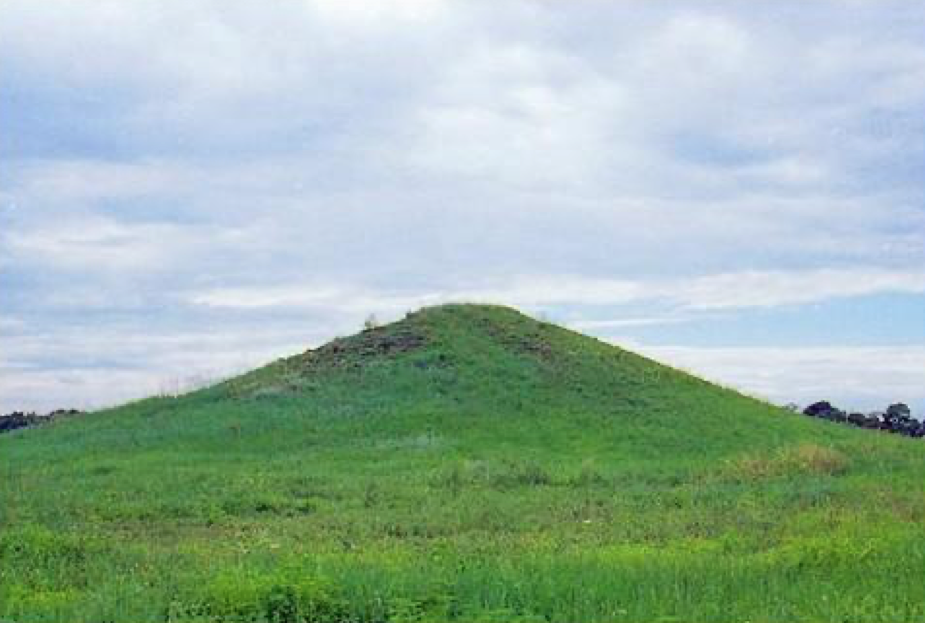Previous Heartland entries: 1, 2, 3 and 4.
A Brief History of the Heartland
Prehistory
During the last ice age (the Würm glaciation), geographic pockets surrounded by glaciers formed in the Heartland, and it is in the extreme conditions of one of these icy pockets that an extraordinary human type, ruthlessly selected by the environment, was able to develop. In the article on racial classification, we saw that the Nordic Central Asian race, progenitor of the R1a and R1b genetic lineages and thus paternal ancestor of most of the world’s modern ethnic Europeans, was born in the Palaeolithic in the heart of Eurasia, the Zungaria and Altai regions being proposed as possible Urheimaten of this evolutionary type. Mackinder himself, who lived at a time when eugenics and the study of human biodiversity were not politically incorrect taboos, related the Heartland to brachycephalic skulls and considered the Central European ‘Alpine’ racial type to be an appendage of the anthropological world of ancient Central Asia,[1]separating the dolichocephalic populations of southern Europe (‘Mediterranean’) from the dolichocephalic populations of northern Europe (‘Nordic’) like a wedge.
After the deglaciation, the hunter-gatherer way of life was still dominant throughout the world, but two new ways of life had emerged: in the Near East, the farmer (evolution of gathering), and in the Heartland, the herdsman (evolution of hunting). From the Neolithic onwards, the Heartland did not cease to spew horde upon horde of pastoralist and mountain peoples over the margins of Eurasia, these peoples eventually forming the aristocracies of many ancient Middle Eastern civilisations.
Through the Persian plateau and the mountainous areas of the Middle East, the R1b lineage will reach Europe, up the Danube and accumulate in breeding nuclei in the Alpine region (Unetice and related cultures), as well as in the French-Cantabrian strip. The R1a took the simpler steppe path to end up in Eastern Europe and the German-Polish Plain. It is here that the properly ‘Indo-European’ world was born, linked to the mobility of large conquering troops, the use of the chariot and the horse, patriarchy and the sense of vast spaces and horizons that would give rise to empires, to such an extent that millennia later, ‘knight’ continues to designate a man considered worthy of respect. It is therefore in the pastoralist-herding cultures of Yamna (or Yamnaya), Poltovka and the Volga battle-axe that we must look for the origins of the chivalric and imperial traditions of history.
The earliest metal-age culture typical of the steppe Heartland is probably that of Sintashta-Petrovka. The Arkaim site in the southern Ural Mountains in the middle of the steppe, dated 1600-1900 b.c.e. is the best-known material evidence of this mother culture. Called the ‘swastika city’, ‘mandala city’, ‘Russian Stonehenge’ (located at approximately the same latitude as the English Stonehenge) and even the ‘capital of the ancient Aryan civilisation’, Arkaim is a fortress-village of concentric circles, oriented according to the cardinal points and the stars, and its inhabitants were probably the ancestors of the Aryans described in the Rigveda (India) and the Avesta (Persia).

Birth and expansion of the use of the two-wheeled radial war chariot, the forerunner of modern armoured military formations. Its emergence is within the Heartland, in the southern Urals, now Kazakhstan, which according to Mackinder was ‘the very pivot of the Pivot Area’. Here the Sintashta-Petrovka culture flourished, where animal husbandry, copper mining and bronze metallurgy played a central role, along with the war chariot and well-fortified human settlements, such as the Arkaim site. Later came the Andronovo (orange) culture with its burial complexes where the warrior was buried in burial mounds along with his weapons, horses and chariot. In Anatolia and Syria, the chariot came from the Hittites, in Egypt from the Hyksos, in Mesopotamia from the Kassites and in Europe from the Celts.
In the Bronze Age, the entire steppe is in ferment. On their chariots and horses, the Mitanni fall on Penthalasia, the Mycenaean Achaeans invade Greece and the Hyksos conquer Lower Egypt. The Rigvedarecounts how three and a half millennia ago the blond Arya, led by the god Indra, swept through the cities of the Indus civilisation, scattering the ‘black skin’ and establishing themselves as the new aristocracy of the region. In India and Persia, conquered by pseudo-Scythian Indo-European peoples from the Heartland, the most important gods are depicted as chariot drivers. In Greece, the Homeric ‘Iliad’ is a hymn to the lifestyle of the Indo-European warriors of the Bronze Age. Even in far-off, inhospitable Scandinavia, the red-haired Thor was conceived as driving a chariot pulled by billy goats. Even after the civilisation of vast areas of Europe and the Middle East, the steppes of the continental interior will continue to be inhabited by peoples of Iranian (‘Aryan’) stock who, like the Scythians, Sarmatians and Alans, will maintain a barbaric modus vivendi until they are swept away or pushed back by new migrations from the interior.

Metal Age cultures where horse husbandry was established. The use of the horse was closely related to a landscape of open spaces and flat horizons such as the Eurasian steppe, as well as to forms of warfare based on speed. This culture would end up having tremendous social and military success across the globe.
These Indo-European steppe societies had a clear predominance of R1a paternal lineages – associated with the Slavs, Persians and North Indian high castes – and bequeathed to archaeology (first Soviet and then international) the phenomenon of kurgans: earthen burial mounds in which important men were buried, found from Western Europe to Central Asia. Philip II of Macedon, the father of Alexander the Great, was buried in a burial mound. This imaginary ritual is the origin of the legends of the lost king: missing and often red-haired rulers (such as King Arthur, Frederick Barbarossa or Genghis Khan) who sleep inside a mountain waiting for ‘the moment of greatest need’ for their people.

Kurgan in Dnipropetrovsk, Ukraine. The origin of myths about kings sleeping inside mountains is to be found in the kurgans (burial mounds) of the Metal Age, where important warriors were buried together with their weapons, horses and other belongings. This is where the genesis of the Indo-European world is to be found.
In the article on Indo-European genetic heritage in Central Asia we saw, in addition to some maps illustrating the subject under discussion, to what extent many anthropological-physical traits considered Europoid survive in some ethnic pockets of Central Asia, including Mongolia and Uyghuristan. Precisely from China come references to Western peoples called Dinlins and Boma, who surprised the indigenous population with their ruddy appearance, blue eyes and reddish hair. Some Russian archaeologists link these peoples with descendants of the Afanasiev culture.
_______________
[1] The Geographical Pivot of History, p. 428.